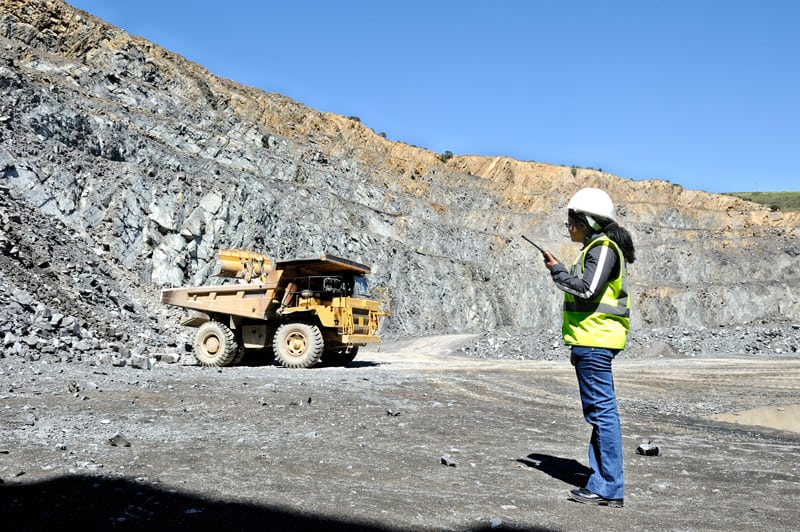Fundamental structural changes are unfolding in the mining sector, but it remains unclear how exactly they will affect gender dynamics in the sector. A lack of gender-disaggregated data is a major obstacle to developing policies and initiatives that will create meaningful progress on gender equality in mining.
To address this data gap, the Women and the Mine of the Future (WMF) project is working to better understand the profile of women working in the large-scale mining sector and its supply chain around the world. WMF is a partnership involving the International Women in Mining (IWiM), the International Labour Organization (ILO), the Environmental Governance Programme (EGP), and the Intergovernmental Forum on Mining, Minerals, Metals and Sustainable Development (IGF).
The project found that mining-related gender-disaggregated employment data is either unavailable or grossly outdated in almost all countries. Across the globe, there are few gender-disaggregated employment databases available. In fact, the ILO seems to be the only global organization that collects such data around the world.
The ILO’s data is sourced from microdata from household surveys, such as national labour force surveys, supplied by various nations. The ILO processes and harmonizes the datasets so they can be compared across countries. This data distinguishes between male and female sexes but does not capture gender specifically.
This ILO data serves as the initial baseline for the WMF project, comprised of both mining-specific and broader data on 10 diverse countries with significant mining sectors: Australia, Brazil, Chile, Colombia, Ghana, Mongolia, Peru, South Africa, Sweden, and Zambia.
Estimates for the numbers of workers were made by extrapolating survey samples according to each country’s population and then highlighting characteristics such as age, sex, and education.
The data shows that mining and quarrying account for a small percentage of occupations in each of these countries. In Sweden, it is as low as 0.1%; the highest is Mongolia, where mining accounts for 4% of occupations.
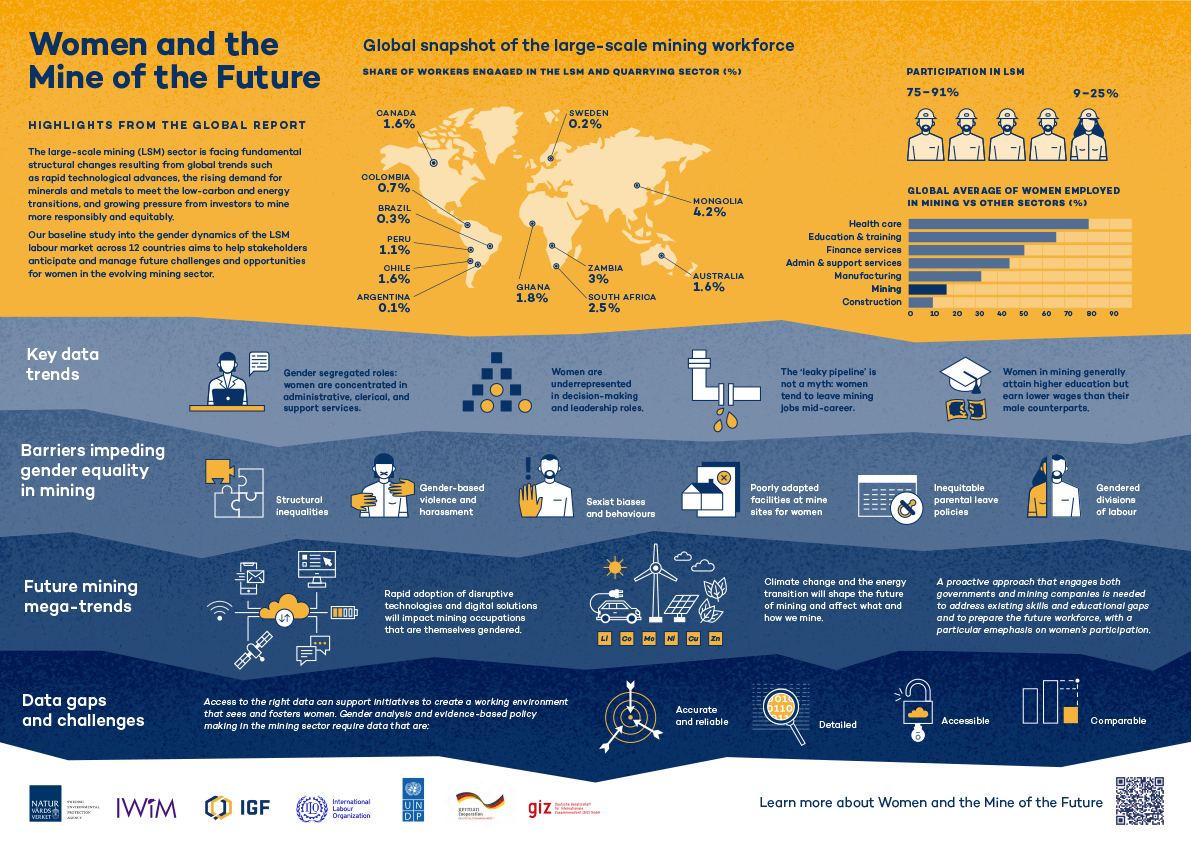
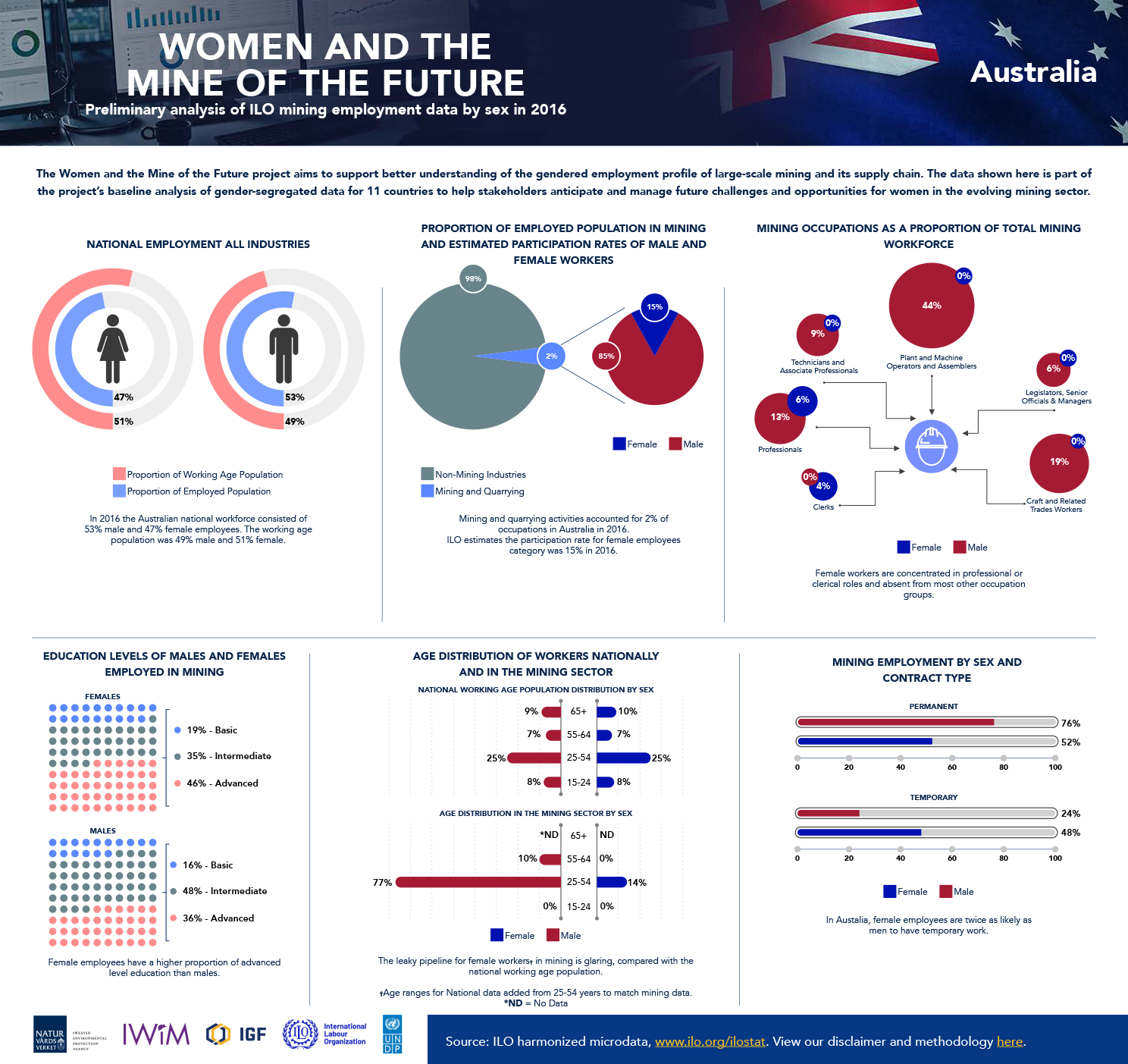
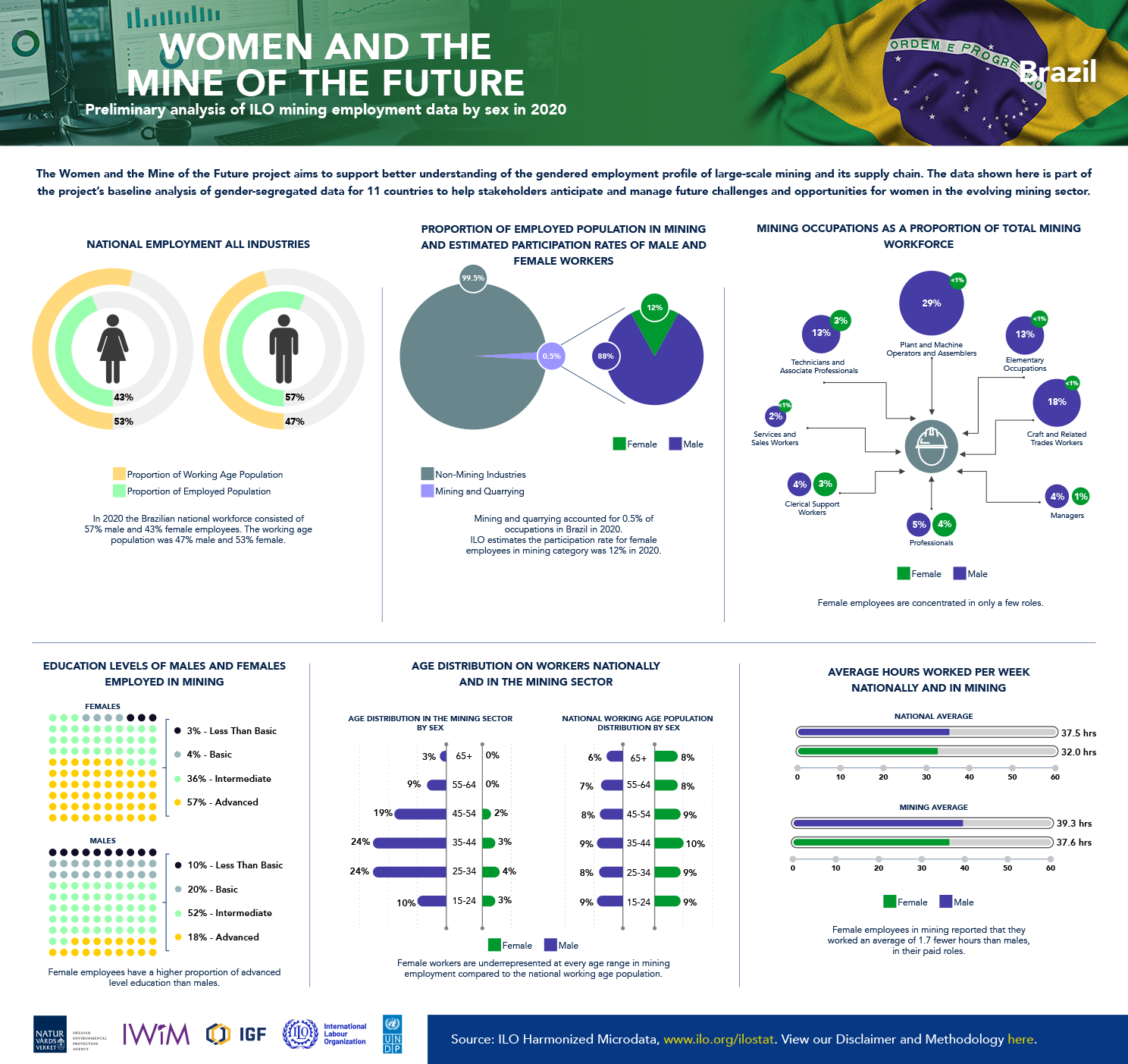
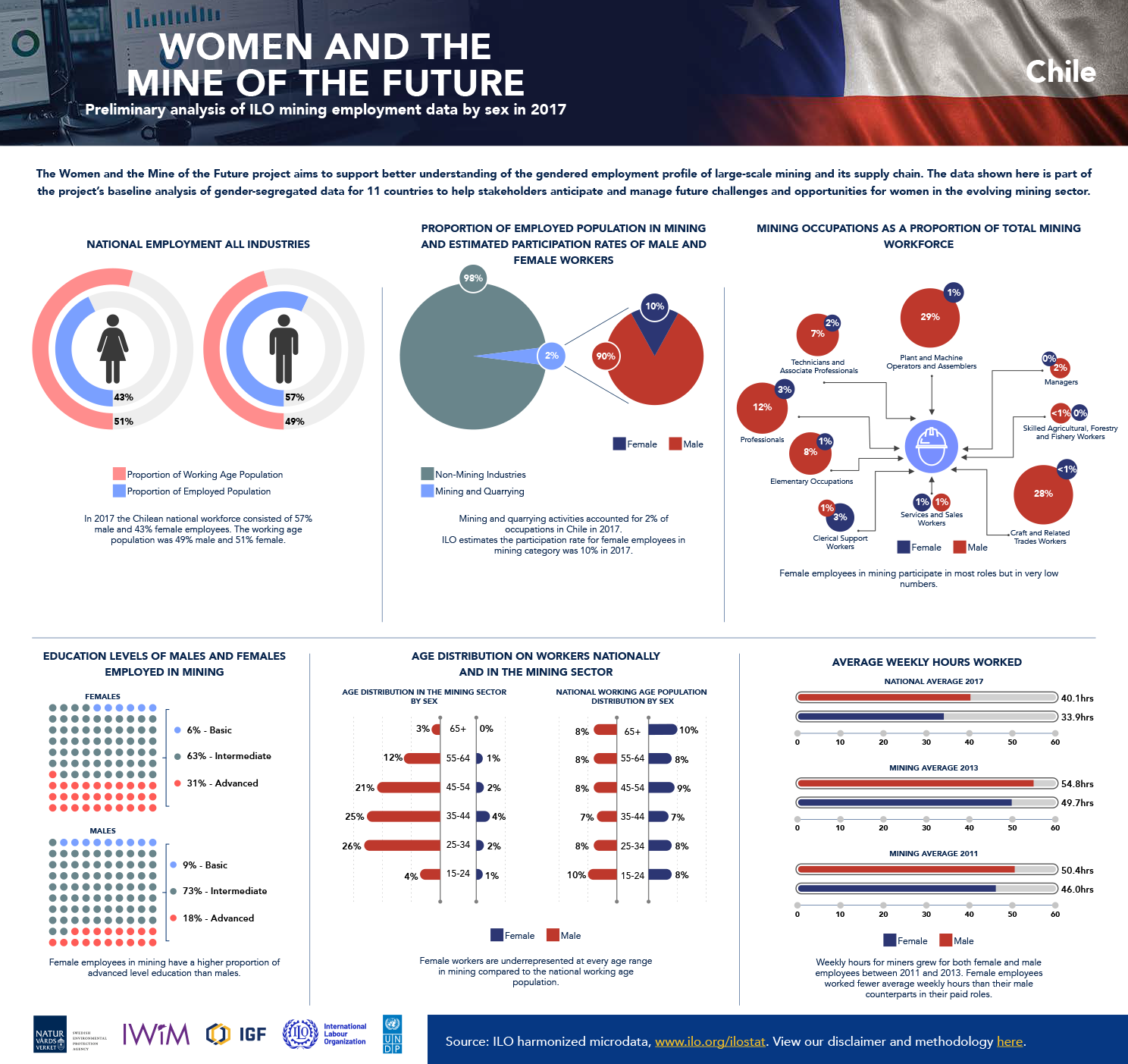
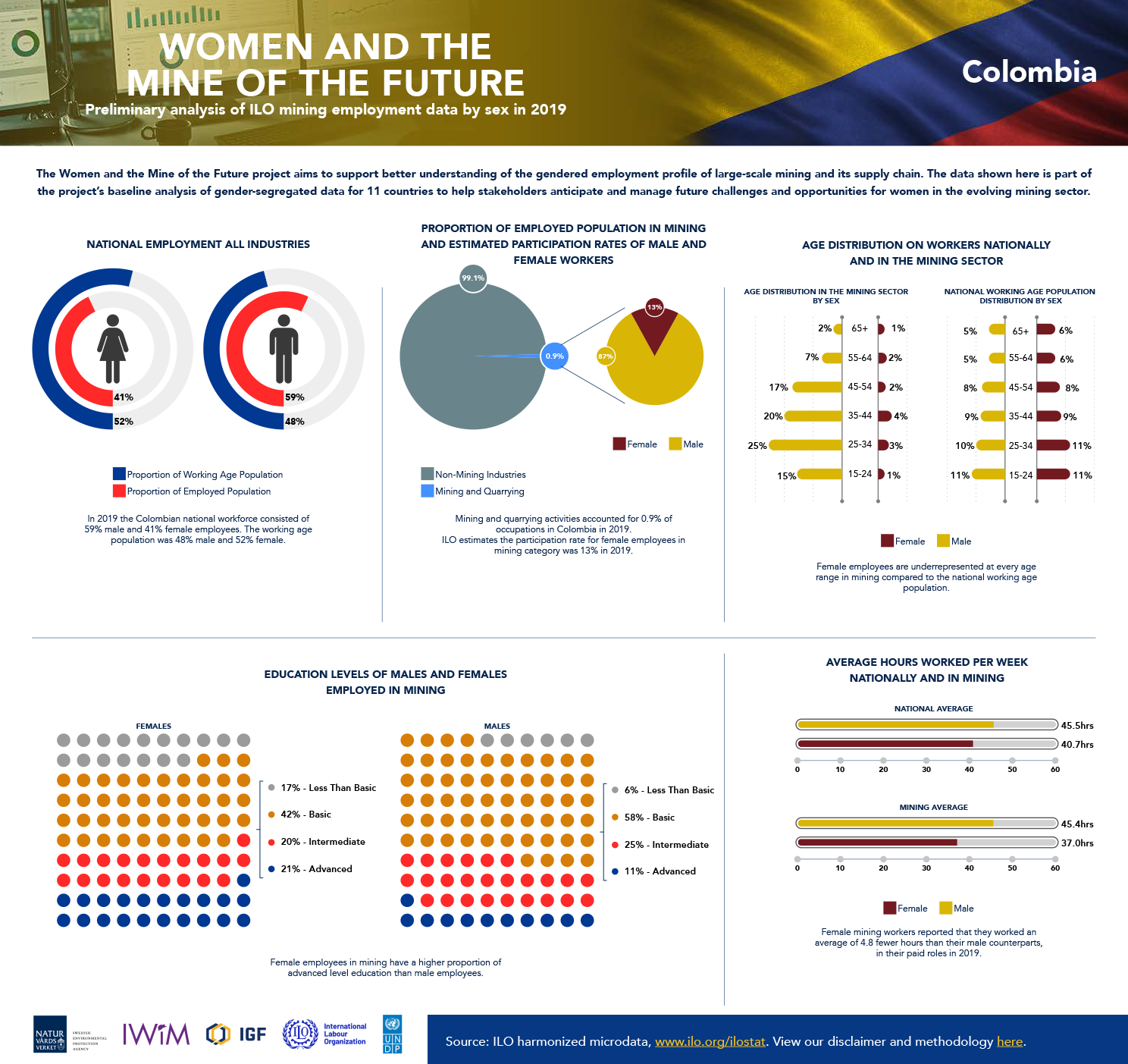
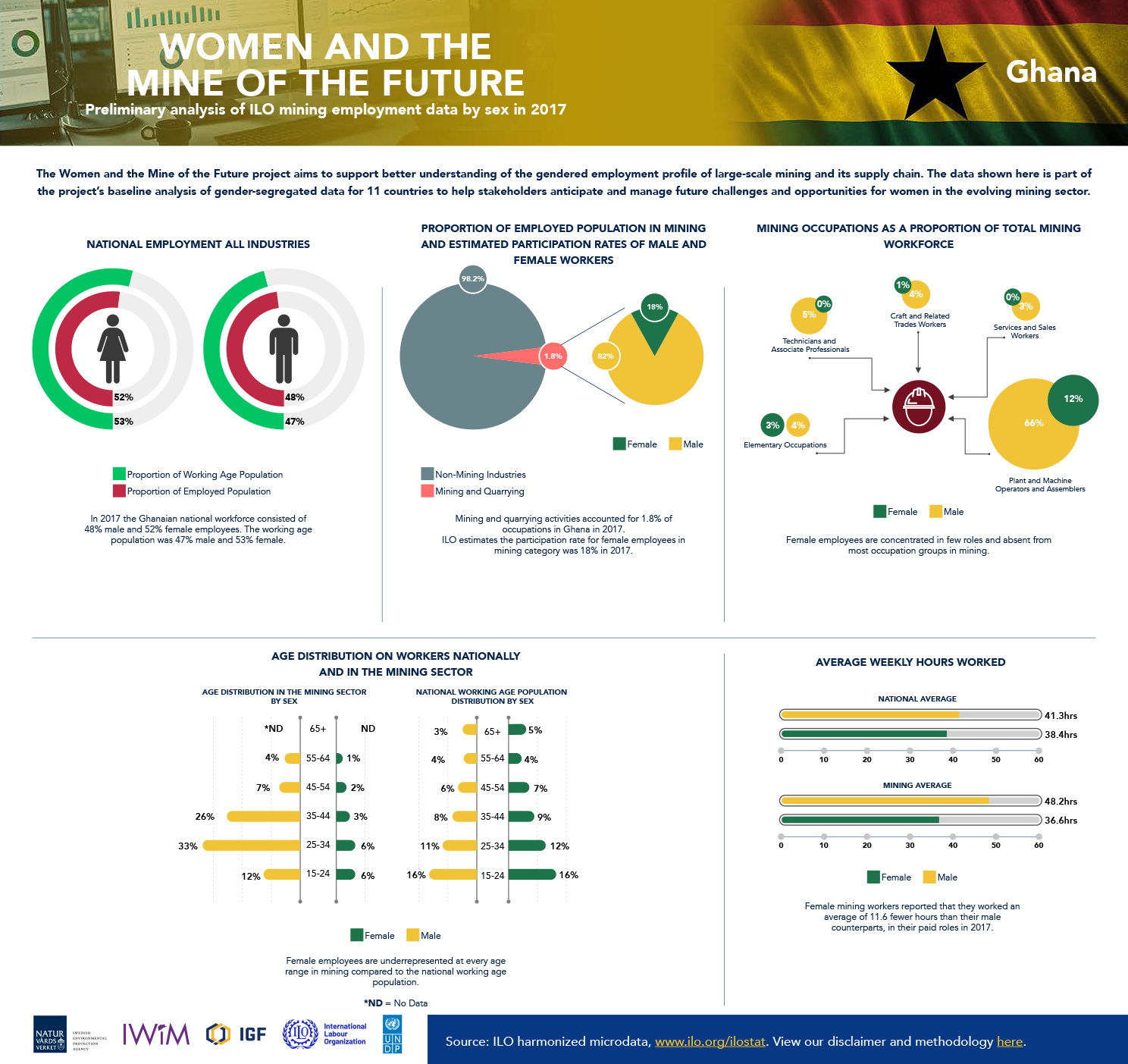
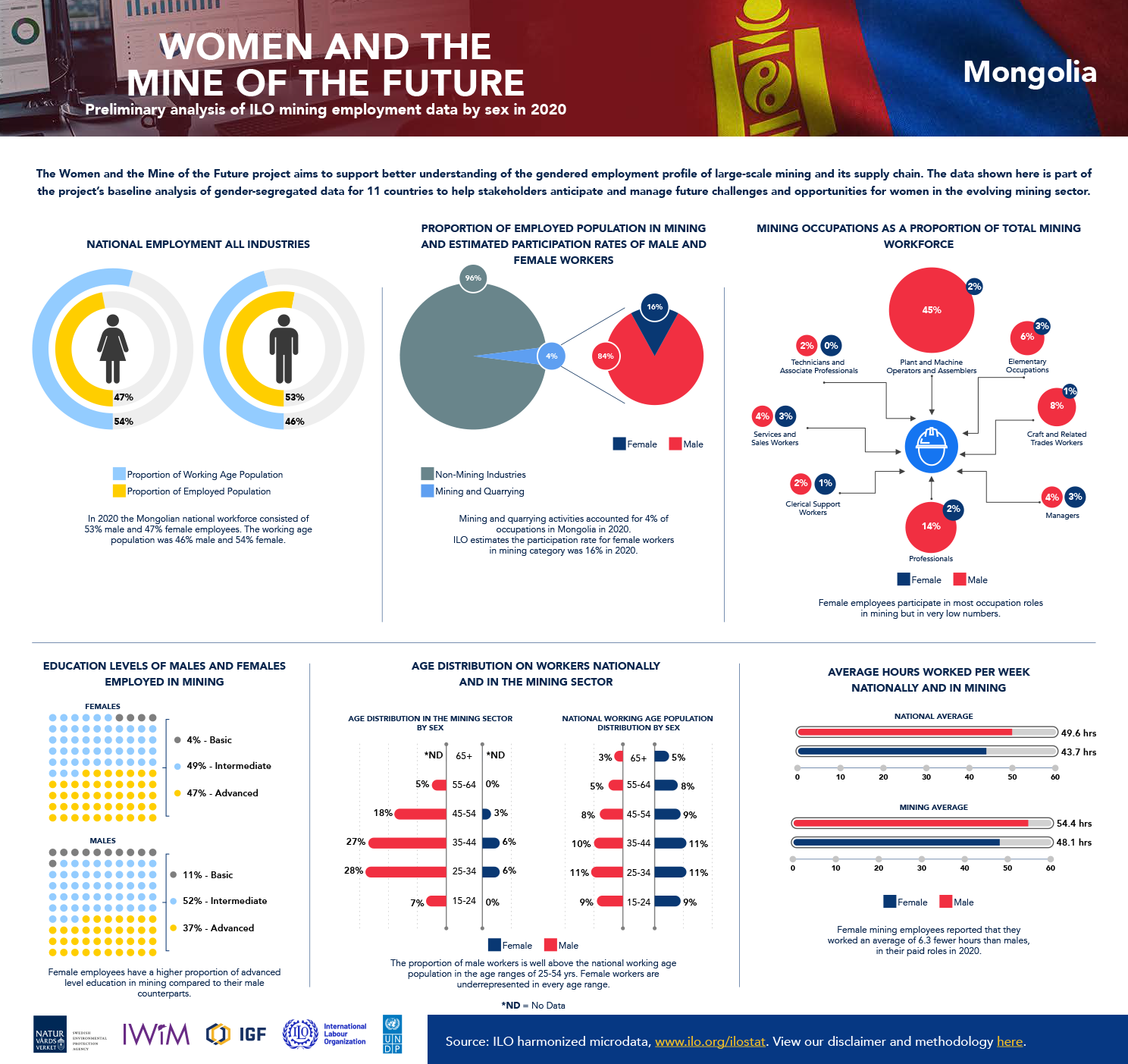
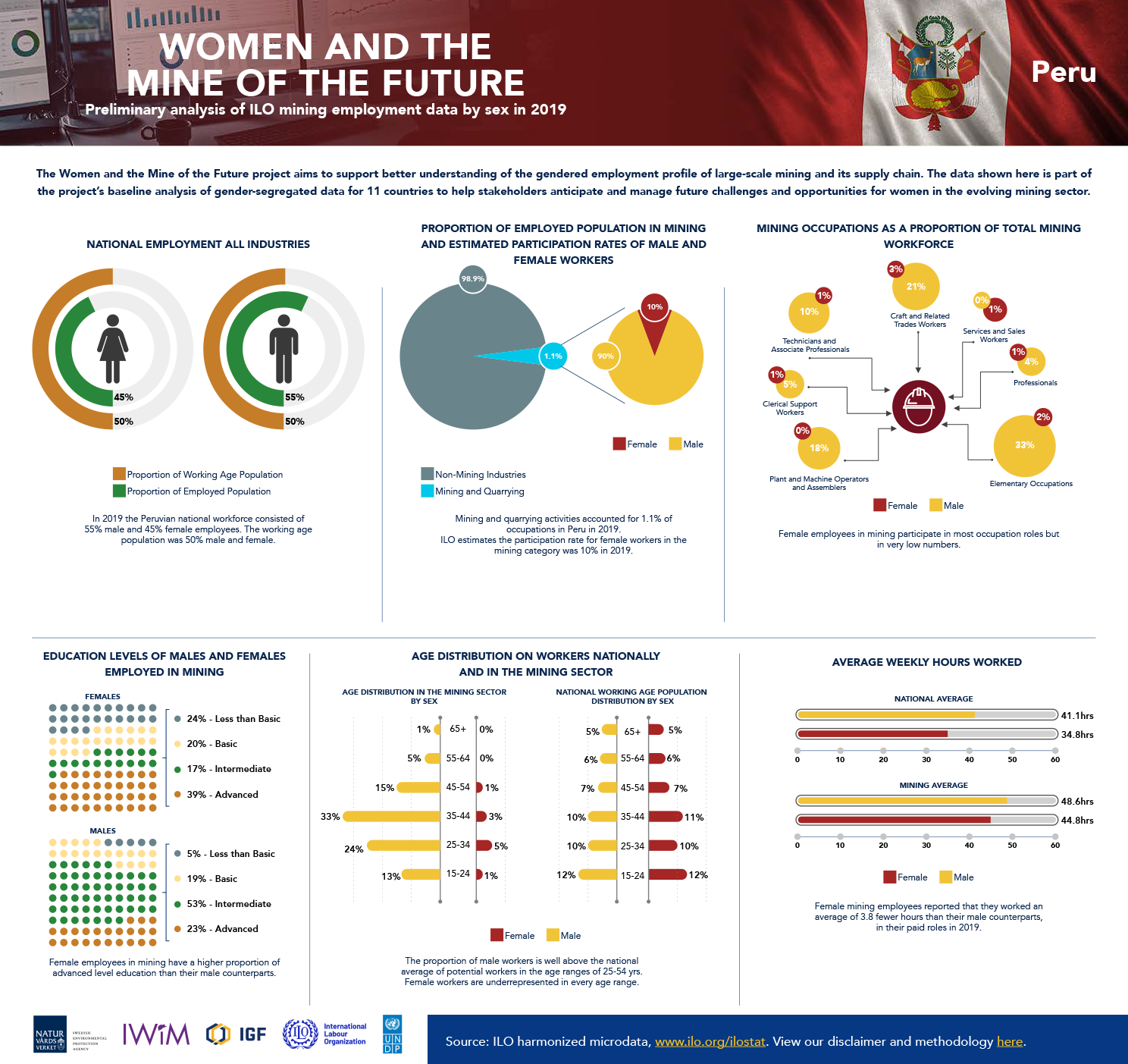
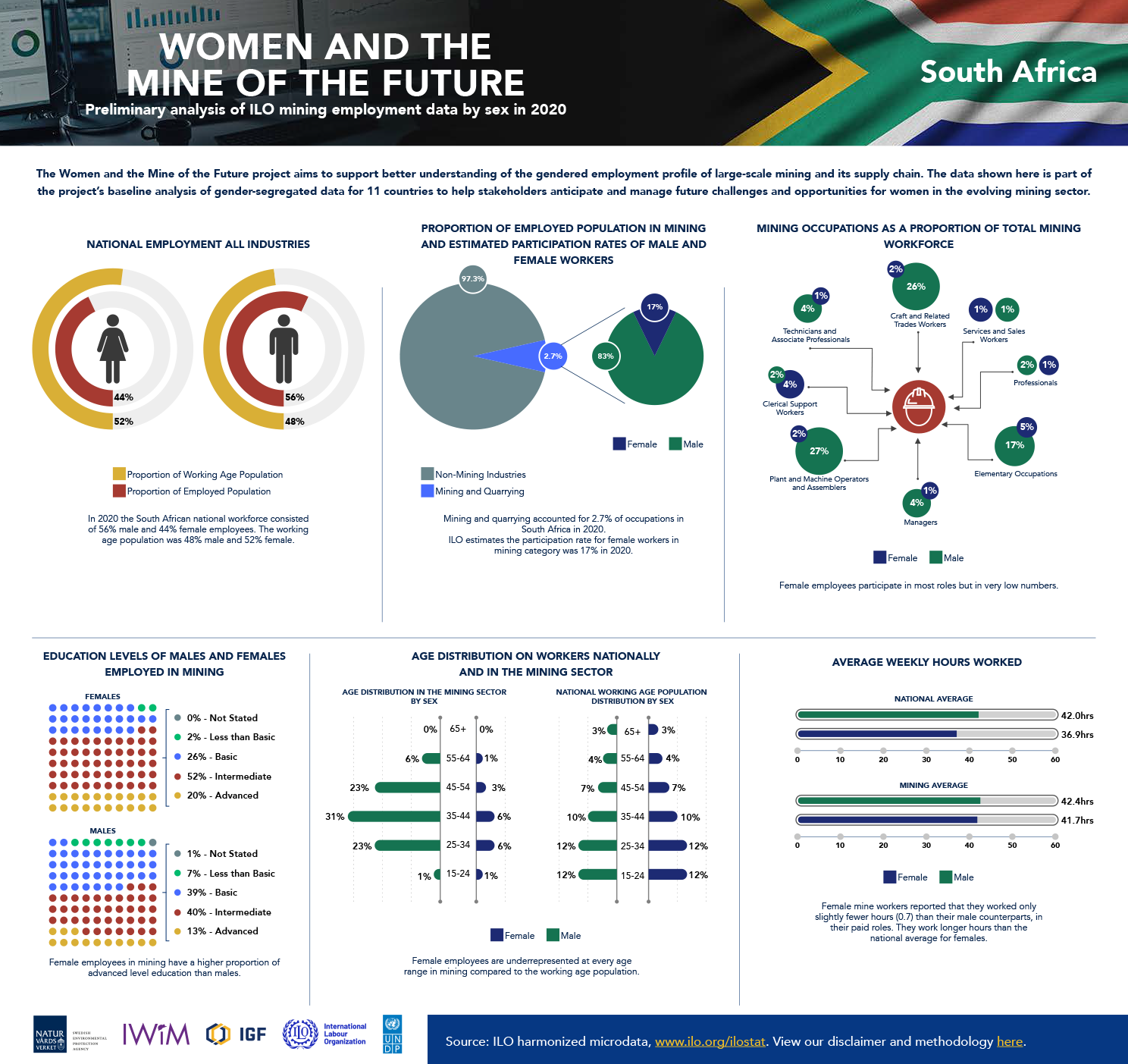
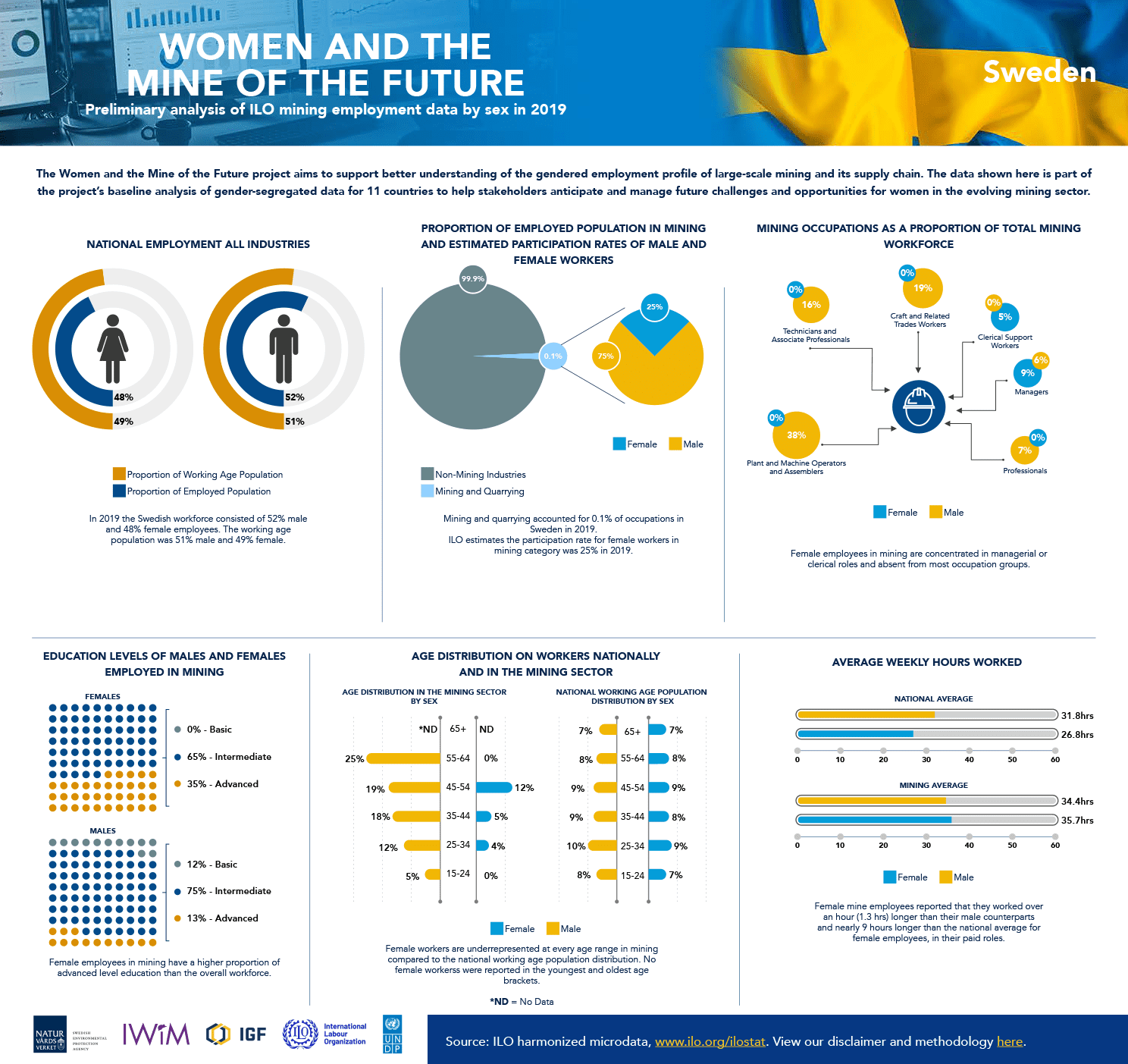
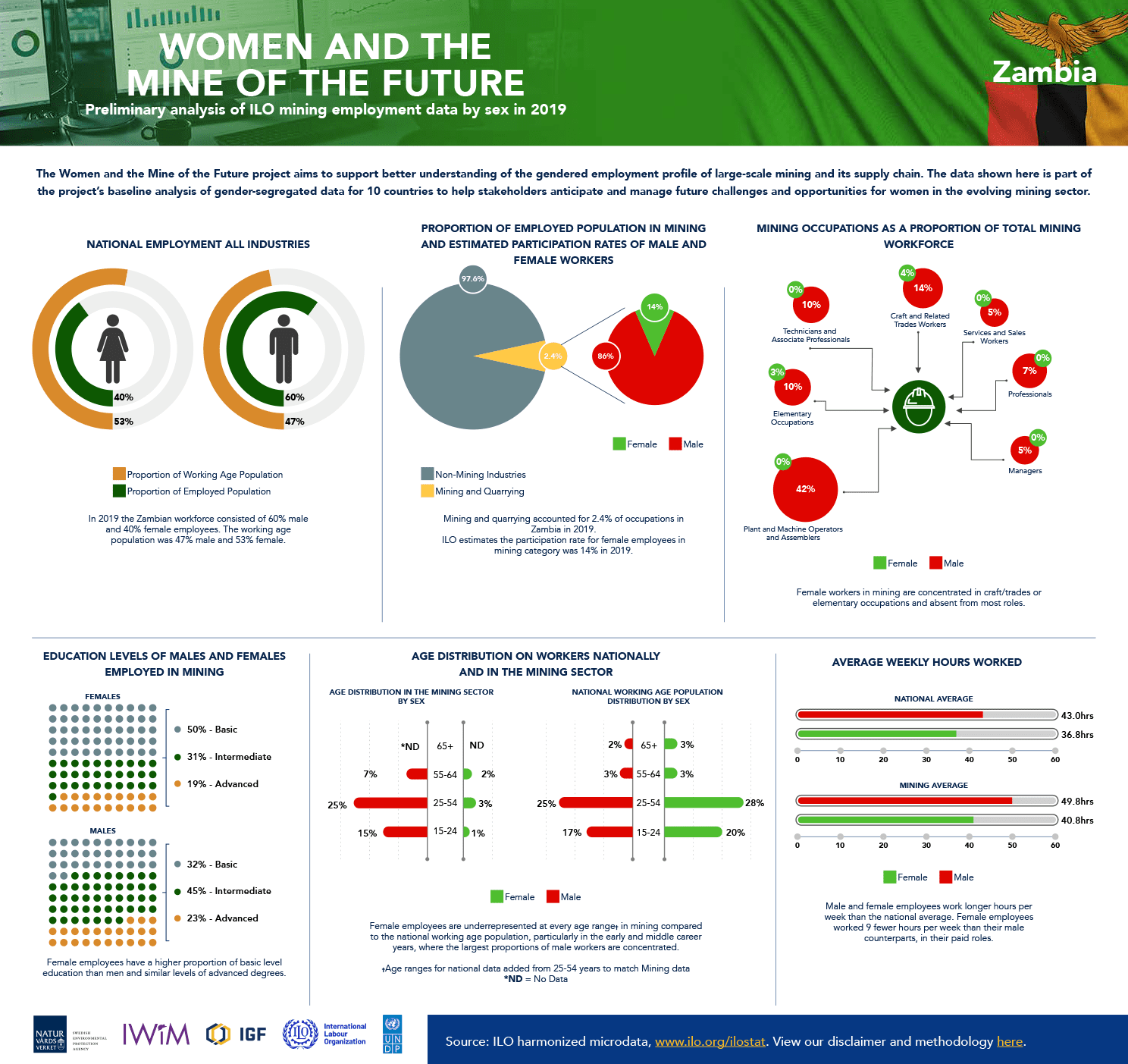
- Download high-resolution infographics and read the disclaimer and methodological note for more information.
Furthermore, except in Sweden, where they hold 25% of the mining and quarrying jobs, female workers make up less than a quarter of the workforce in all the other countries; the greatest workforce imbalances are in Chile and Peru, where female workers make up just 10%.
The data disaggregates the percentage of males and females employed by age, professional qualification, education, and occupation groups within the mining sector. The data shows that females are underrepresented in almost every age range of the working population. In Zambia, this underrepresentation is particularly acute in the early and middle career years. No females were reported in the youngest and oldest age brackets for Sweden, which may be due to the unavailability of data.
In terms of education level, the ILO data shows that female mining workers hold a higher proportion of advanced education than the overall workforce, except in Zambia, where female miners have a higher proportion of basic-level education compared to males but similar levels of advanced education.
Despite having more advanced-level education overall, female employees in the mining workforce in all 10 countries occupy mostly professional, clerical, craft/trades, or elementary occupations and are absent from, or underrepresented in, most other occupation groups. This data confirms what has been widely reported in the literature: that female workers hold traditionally gendered roles that attract low wages and are persistently absent from technical, managerial, and leadership positions that have high wages.
Furthermore, the data shows that female employees work fewer hours per week than their male counterparts in paid roles. The difference ranges widely, from an average of 0.7 fewer hours per week in South Africa to 11.6 fewer hours in Ghana. It is interesting that Africa hosts countries with both the smallest and largest hourly work gaps. The data for Australia is not fully comparable, as it only shows that female workers are twice as likely as males to have temporary employment in the mining sector.
Also, the sample sizes in the ILO data were neither uniform nor, for the most part, adequate. The lack of uniformity makes comparison difficult, while its inadequacy affects the reliability of the data.
Nonetheless, the data provides an important baseline on which to build. Its limitations demonstrate the need for a more comprehensive study to better understand the nature and extent of gender inequality in the mining industry. The next phase of the WMF project will dig deeper to analyze national reports from the 10 countries discussed here, plus Canada, for which we did not have comparable ILO data.

